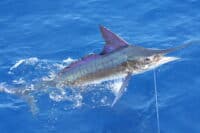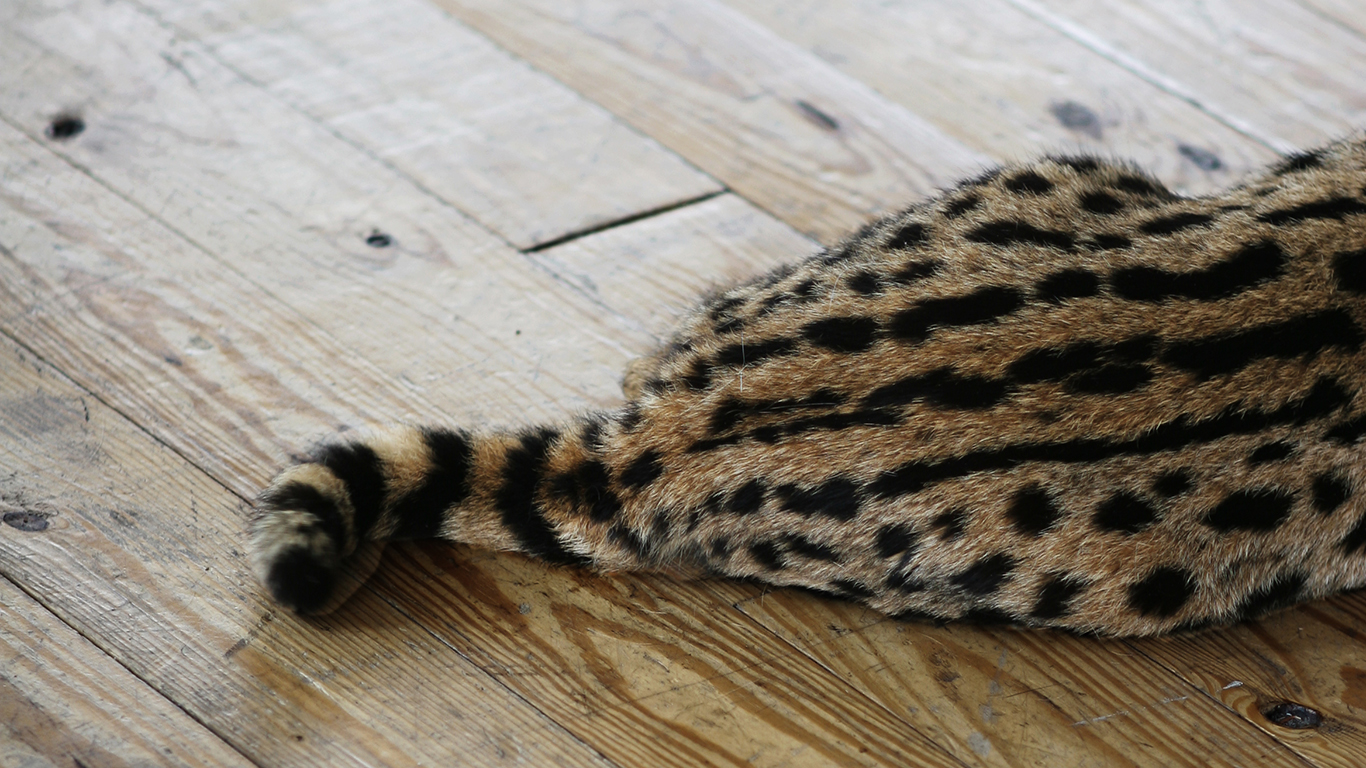
Ever wonder how dogs first became domesticated? In 1959, Soviet geneticist Dmitry Belyaev wondered the same thing and began experimenting with domesticating foxes by selecting and breeding the most docile animals. Today, there is a sustainable population of domesticated foxes that don’t fear humans and actually seek out human companionship, much like dogs. And unlike wild foxes, some may have curled tails and spotted fur.
Domestication takes many generations and causes both physical and behavioral changes in animal populations. Many pets these days, though they may have been born in captivity, are not technically domesticated. 24/7 Tempo identified 25 unusual animals that people actually keep as pets. Some are domesticated and some are very much wild animals that people choose to keep in their homes and yards. These are the official pets and animals of every state.
If you’re interested in owning an unusual pet, be sure to familiarize yourself with its specific needs. Many of these animals need much more intensive care than dogs or cats. Be sure to check your state’s exotic pet laws to ensure that it’s legal to purchase and own certain animals in your state, and as always, be sure to purchase pets from a reputable dealer. Too many animals are smuggled from the wild to satisfy the exotic pet market, and many are killed in the process. These are animals that humans are driving to extinction.
To select 25 unusual animals people actually keep as pets, 24/7 Tempo compiled a list of domesticated animals, animals that may currently be in the process of domestication, and undomesticated but captively bred animals. We selected a range of animals that are less commonly kept as pets as found in the wild, unique or rare in some way, or are hard to tame.
Click here to see 25 unusual animals people actually keep as pets.
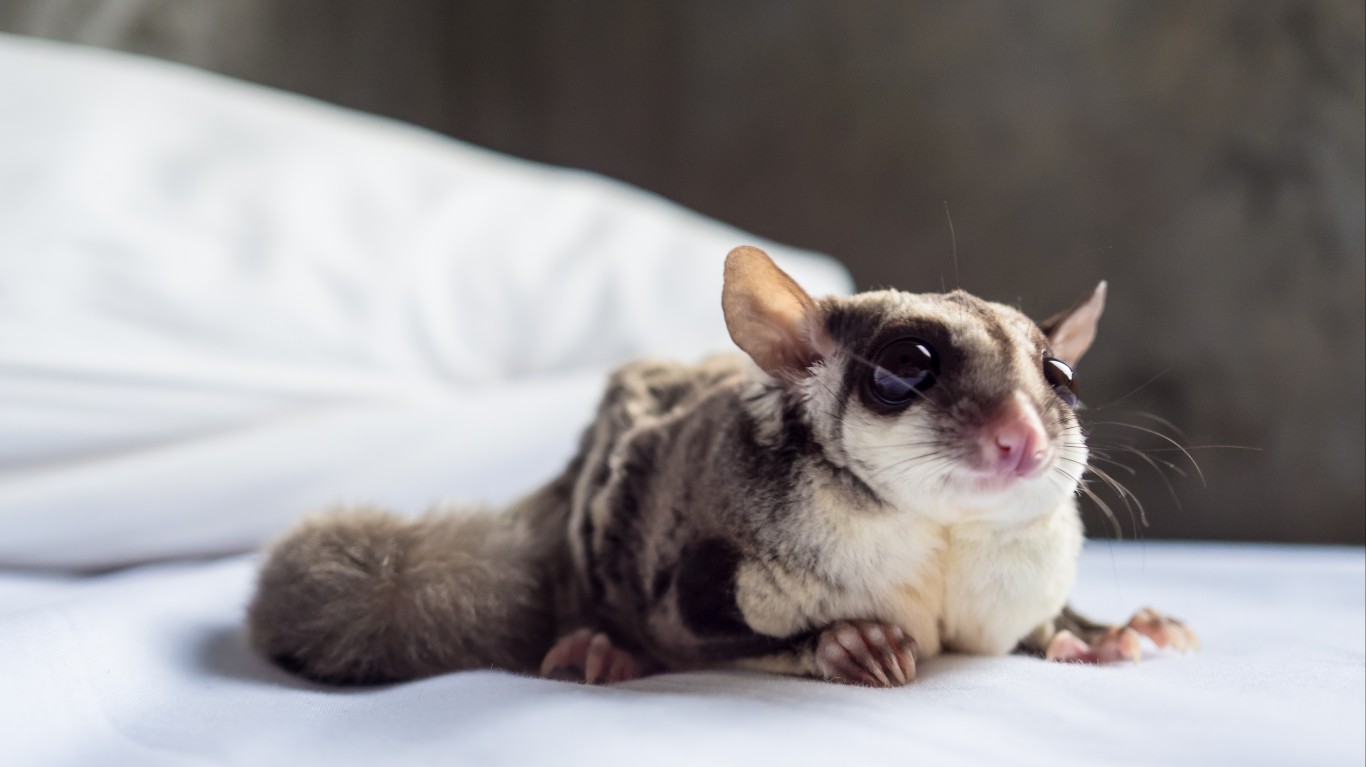
1. Sugar gliders
Small, nocturnal marsupials native to Australia and New Guinea, sugar gliders have large flaps of skin that stretch from their arms to their sides and allow them to glide through the air. They need space to fly or glide around. Extremely social in the wild, they need to be kept in pairs in captivity — never alone. If not handled daily, sugar gliders won’t become tame and could start to get nippy and chew on things. Sugar gliders are illegal to own in some states, while others require an exotic pet permit or proof that the pet was obtained from a regulated supplier.
[in-text-ad]

2. Mandarin ducks
Considered some of the most beautiful waterfowl on Earth, Mandarin ducks are popular in outdoor aviaries. They need at least a 6 foot square, 6 inch-deep pond, and a ground enclosure of matching size. The pond must be filtered and occasionally drained and cleaned. Mandarin ducks have a long history of captive breeding and will mate readily if given a nesting box. Native to East Asia, wild Mandarin duck populations have also become established in California and several European countries.

3. Genets
Related to the mongoose but with the patterning of a wild cat, genets range from 2 to 6 pounds and 16 to 22 inches in length, excluding their long tail. Although genets have been kept in captivity since the Middle Ages and used to hunt rodents, they are now popular as exotic — though distinctly not cuddly — house pets. Genets need a large enclosure and several hours of outdoor play time to remain healthy. Luckily, they are leash-trainable from a young age and will also use a litter box.
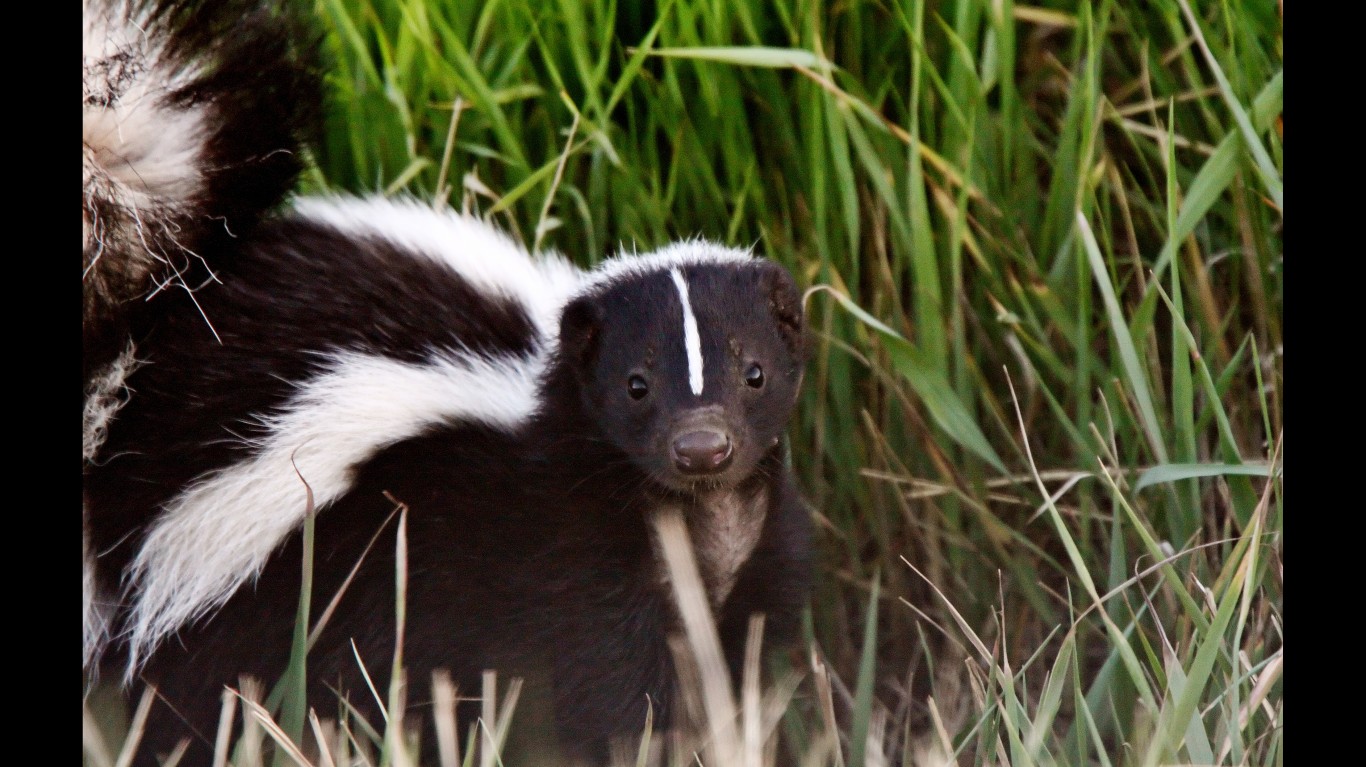
4. Skunks
Domesticated skunks, which are only legal in a handful of states, have been bred in captivity for over 60 years. They are de-scented at a young age so they cannot spray the strong smell they are known for. Although skunks can make sweet, affectionate pets, they also tend to shred things with their long claws if they are neglected. Domesticated skunks must be kept securely indoors, as they have bad homing instinct and will likely not find their way home if they get out.
[in-text-ad-2]
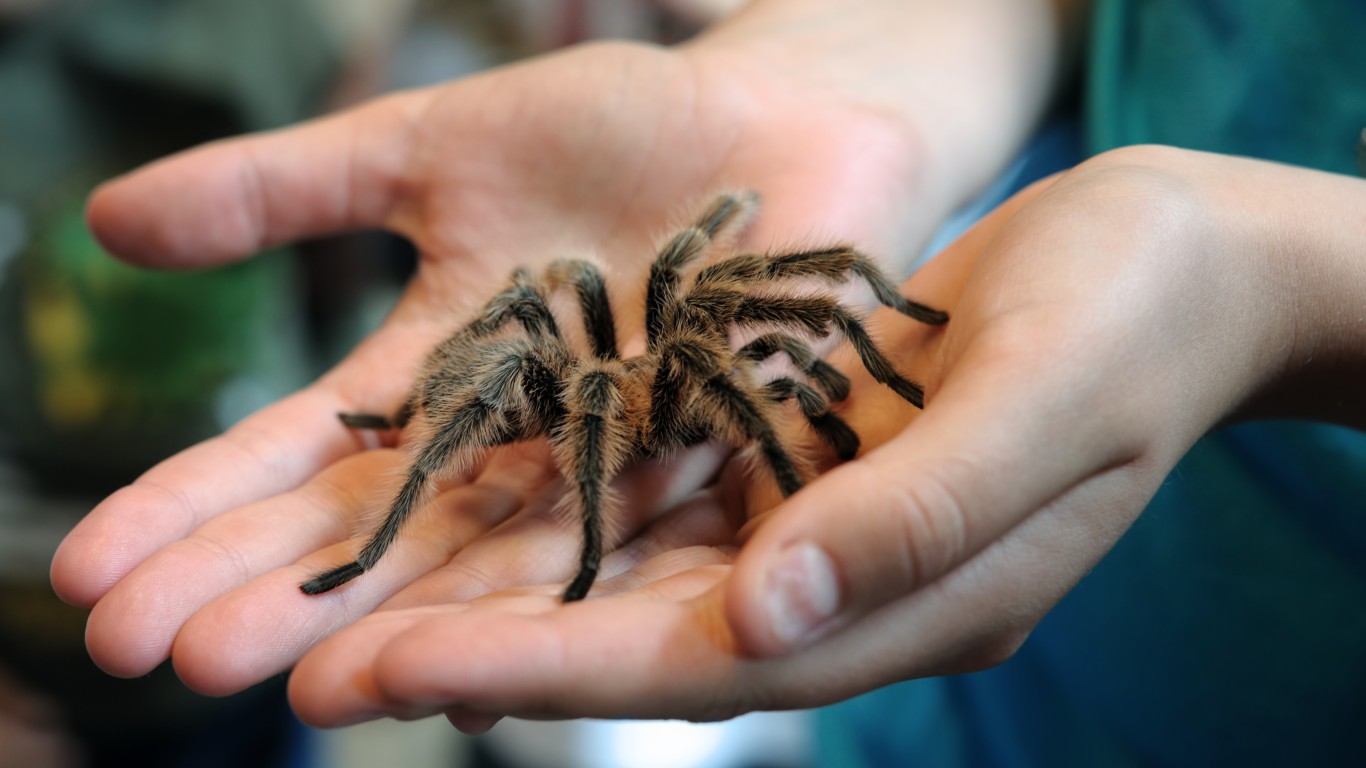
5. Tarantulas
There are over 800 species of tarantula, and many that are kept as pets. The Chilean Rose is a popular species as they are hardier and easy to care for. Females of the species can live up to 20 years in captivity, so owners need to be ready for a long-term relationship with their pet. Tarantulas aren’t the best pets for children or people who want to handle or cuddle their pet as they spook easily and may fall and become injured or bite their owner. Their bites are poisonous, though not any more irritating than a bee sting.
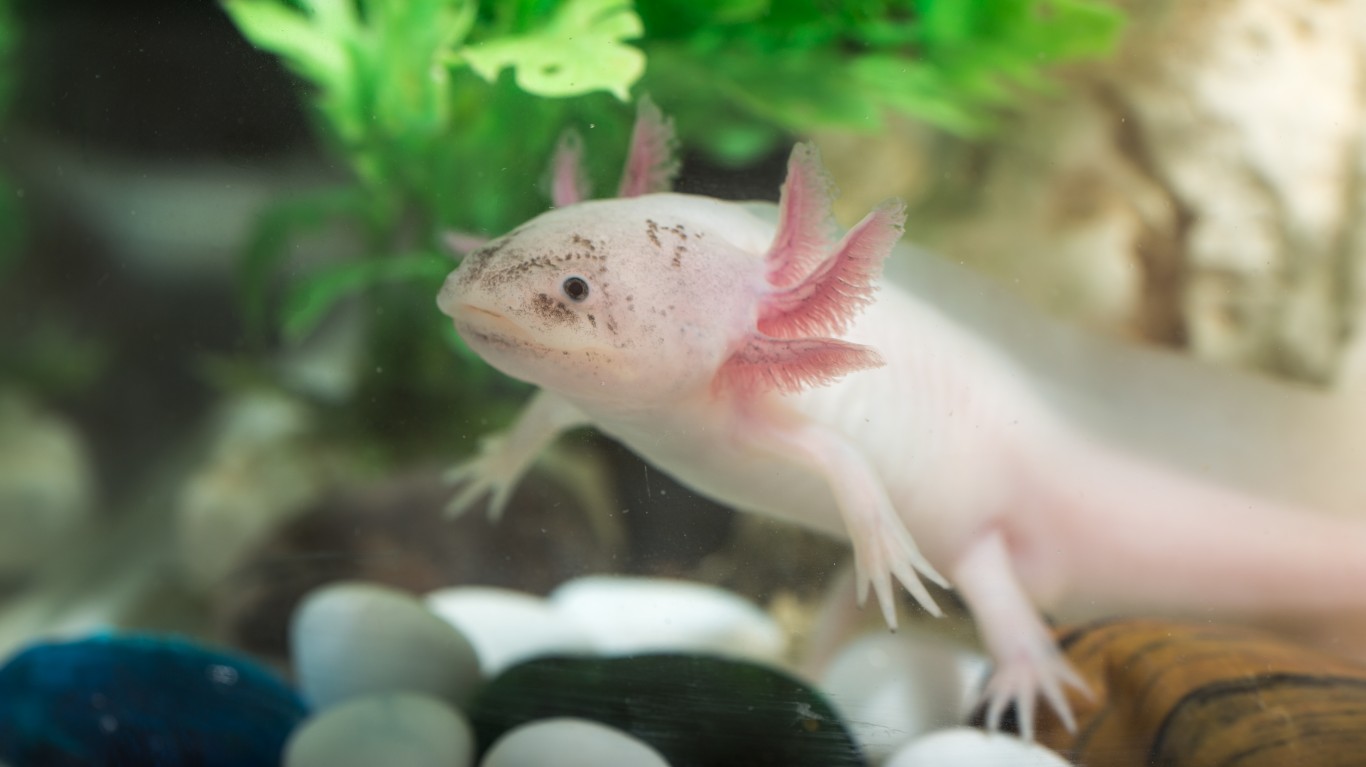
6. Axolotls
Axolotls — also known as Mexican Walking Fish — are actually a type of salamander native to Mexico. Unlike other amphibians, they are known to remain aquatic their whole lives, so in captivity they will need a well-filtered, temperature-regulated water tank with a gravel bottom. Axolotls are endangered in the wild and have very sensitive skin, which means they are a pet that is great for observation but not for handling. They are legal to own in most states.
[in-text-ad]

7. Muscovy ducks
Muscovies are a tropical duck native to Mexico and Central and South America. They are known to be docile, easy to raise, and quiet — which is rare for waterfowl. They can be affectionate pets, and the males are not aggressive. Muscovy ducks are easily adaptable, which means that escaped pets can become a nuisance to local fowl populations, so they must be kept on their owner’s property at all times or they risk being seized by the Fish and Wildlife Department.
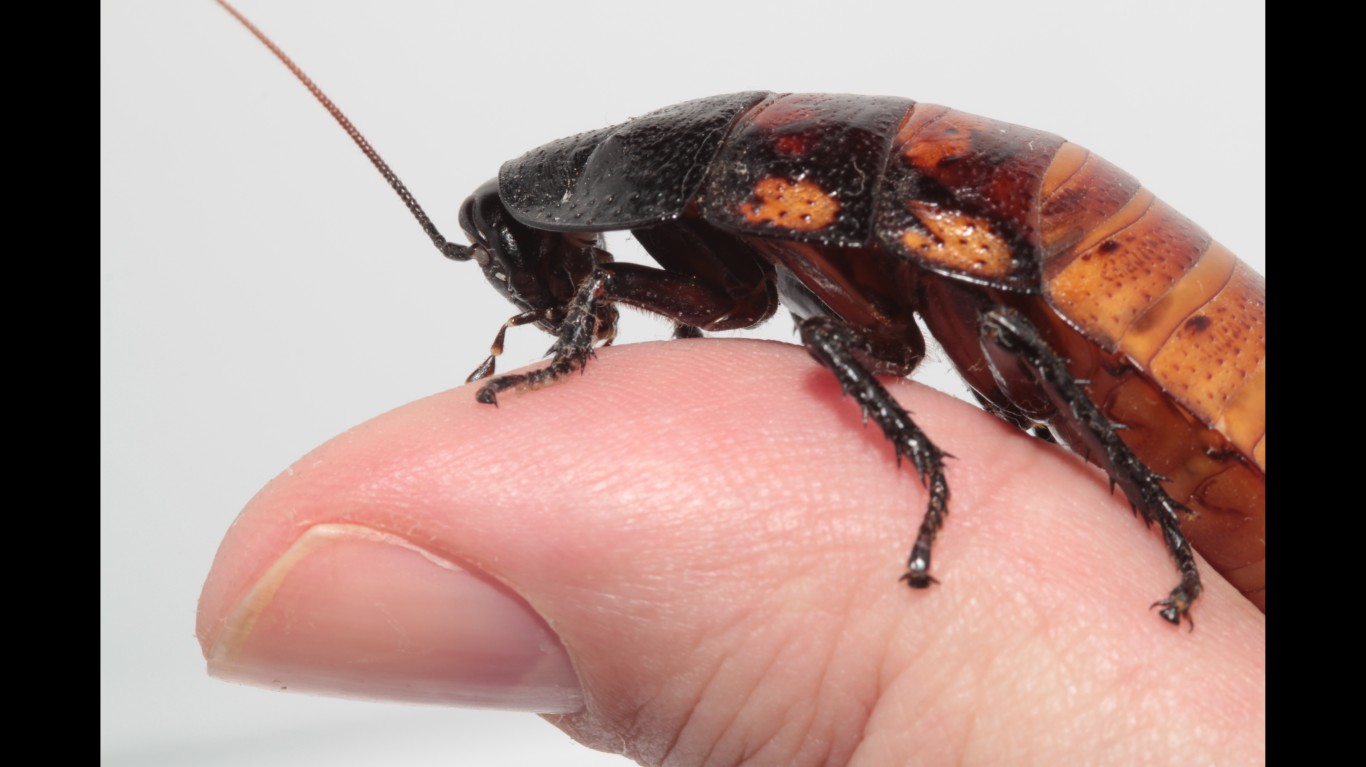
8. Madagascar hissing cockroaches
Madagascar hissing cockroaches can live for five years in captivity and grow up to 3 inches long. Unlike most cockroaches, they don’t have wings, so it’s safe to take them out of their cages and handle them without fear of them flying and escaping. They are great at climbing on glass, so they need a secure lid on their terrarium. Some states require a permit for owners and breeders, and precautions must be made to ensure that pregnant females don’t escape into the local environment.
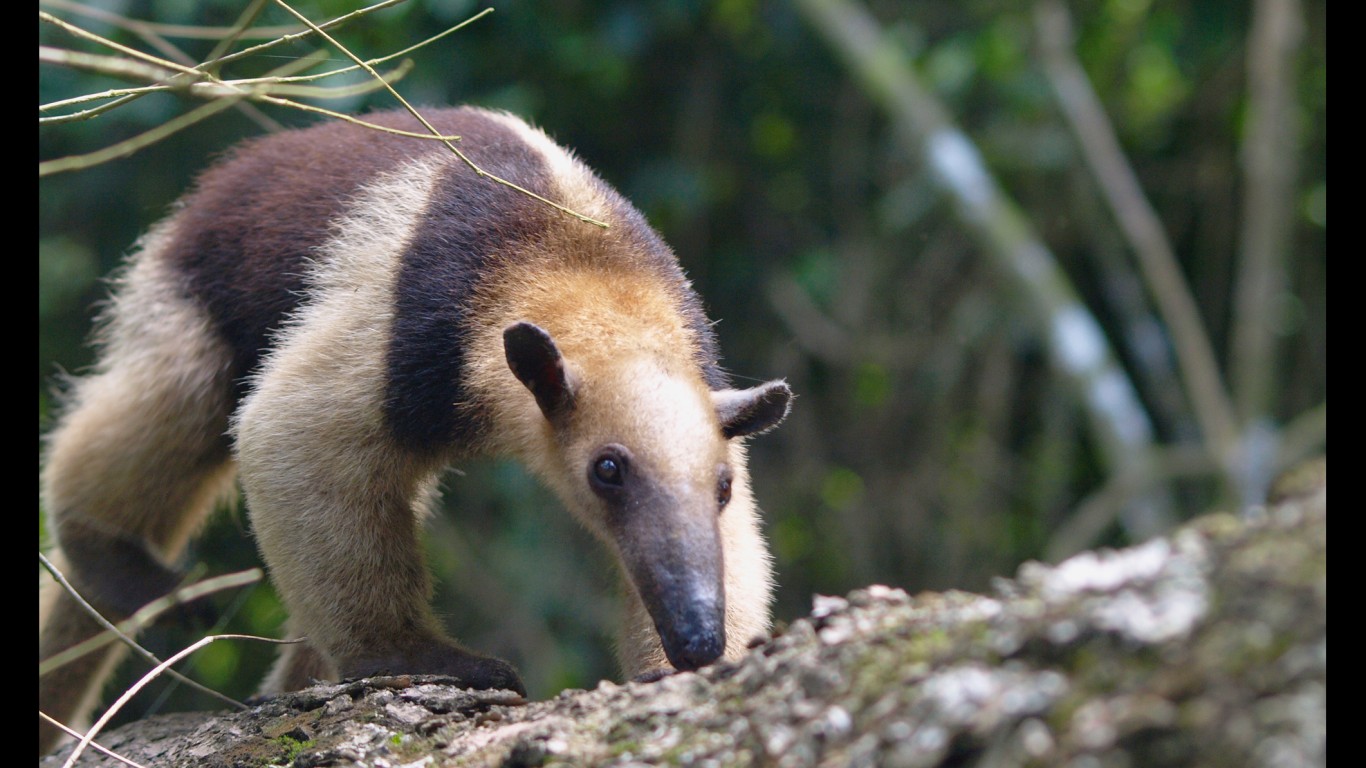
9. Tamanduas
Small anteaters native to South America, tamanduas require extreme dedication from their owners if they are to be kept as pets. They are insectivores and love to eat termites but will also tolerate eggs, beef, and soft fruits. Tamanduas need warm environments, outdoor time, climbing obstacles, and a nest. They can be very snuggly and affectionate. They have no teeth, though they do have long front claws. They are considered exotic pets, which are illegal in some states, and are also quite expensive to purchase, costing anywhere from $3,000 to $8,000.
[in-text-ad-2]
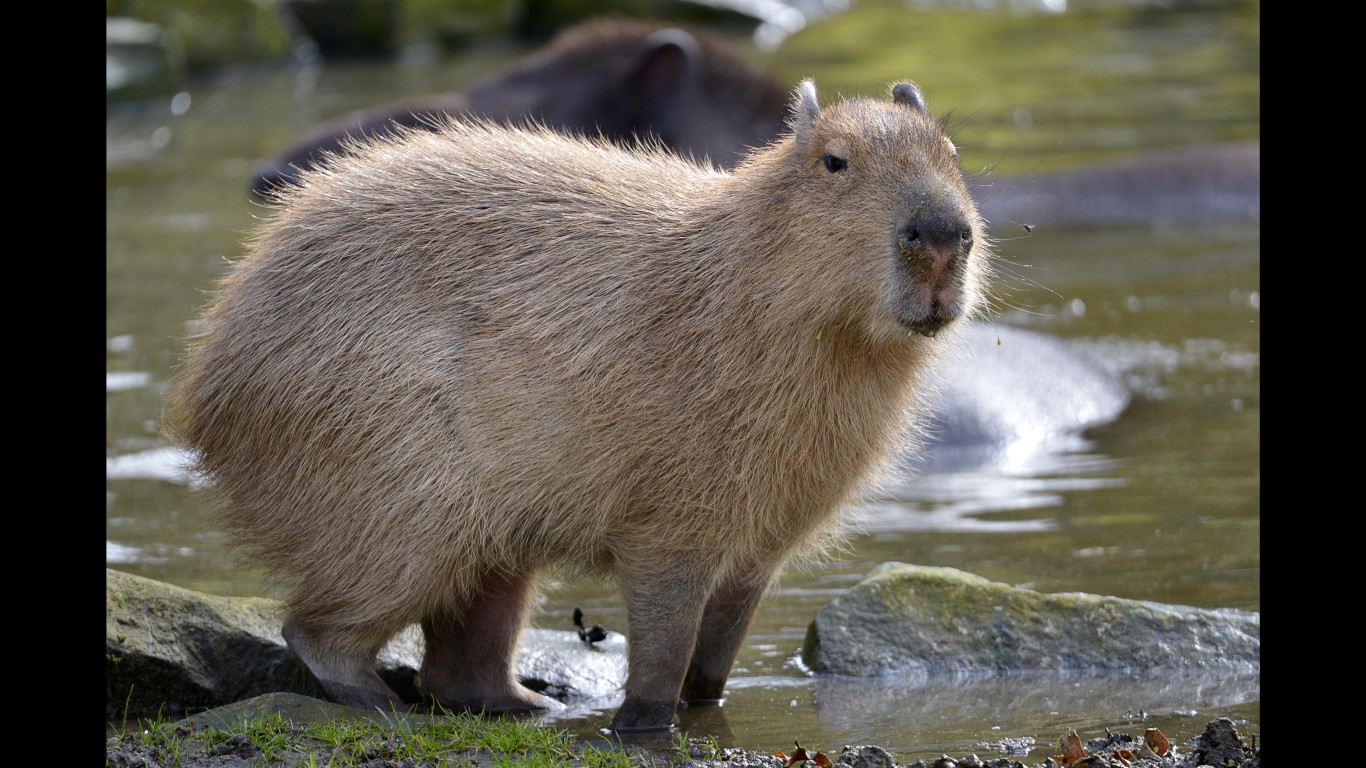
10. Capybaras
Capybaras are cute but challenging pets. They are extremely social and usually live in groups, so owners must keep at least two capybaras to keep the animals happy. They are also semiaquatic, so they need access to a deep pool or swimming area. They can grow to be 2 feet tall and 170 pounds, and they need a rather large enclosure to move around in. Native to Central and South America, capybaras are considered exotic pets and may not be legal to own in all states.

11. Alpacas
Alpacas are a species of camelid native to South America, where they have been domesticated for thousands of years. Most often raised for their soft fleece, they are slowly becoming popular pets in the United States. They can grow to be 100 to 200 pounds, and they need a large outdoor space and the companionship of another alpaca in order to thrive. Alpacas are easy to train and transport, though it takes a while for them to bond with and trust their humans. They eat mainly grass or hay, making them an easy addition to an already established livestock or hobby farm.
[in-text-ad]
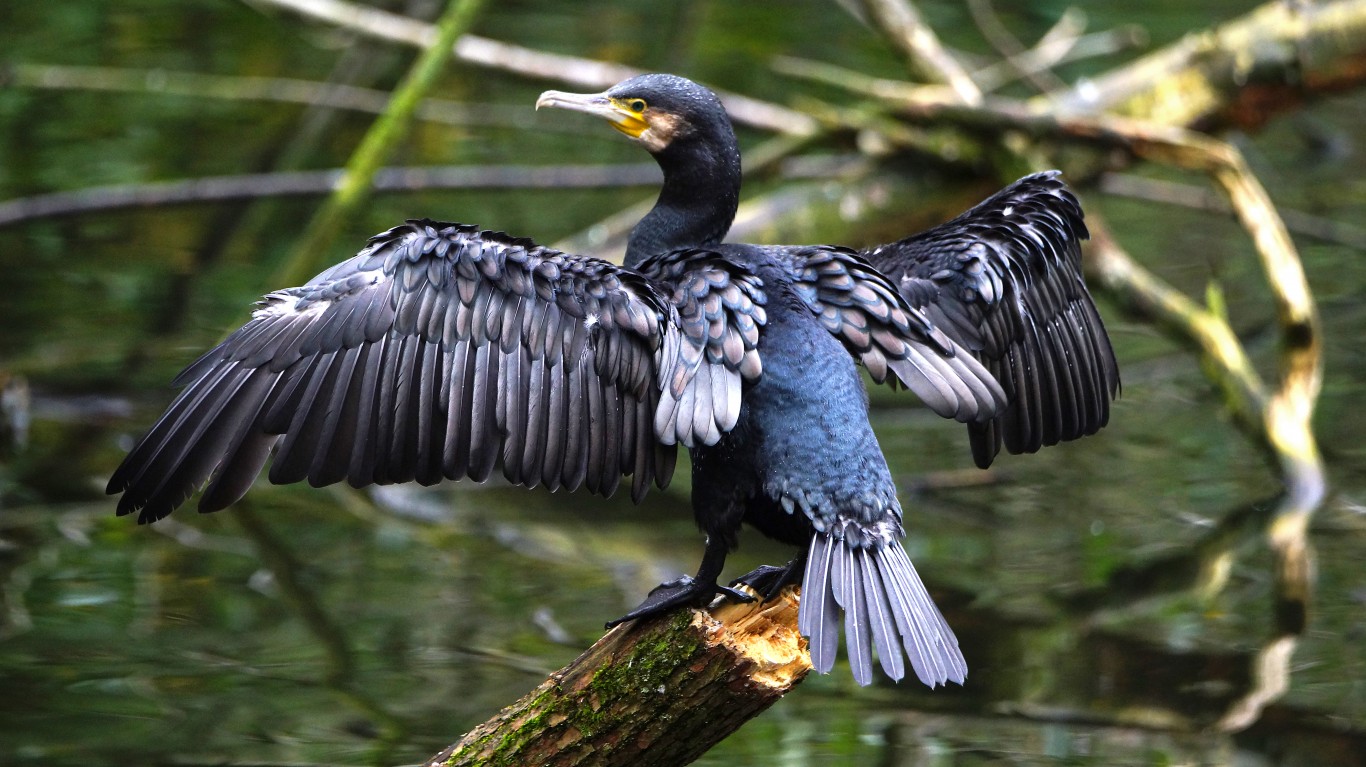
12. Cormorants
Famous French painter Henri de Toulouse-Lautrec had a pet cormorant. The cormorant would sit at a café on-leash while drinking absinthe with its owner. Cormorants also have a long history of domestication in parts of Asia, where they are trained to catch fish. In Japan, a bird will work with a single family for its entire life and is seen as a partner in the fishing trade. Despite the reverence they receive in some cultures, these birds are also often considered a nuisance by fishermen and are culled in parts of North America to ease their impact on fish populations.
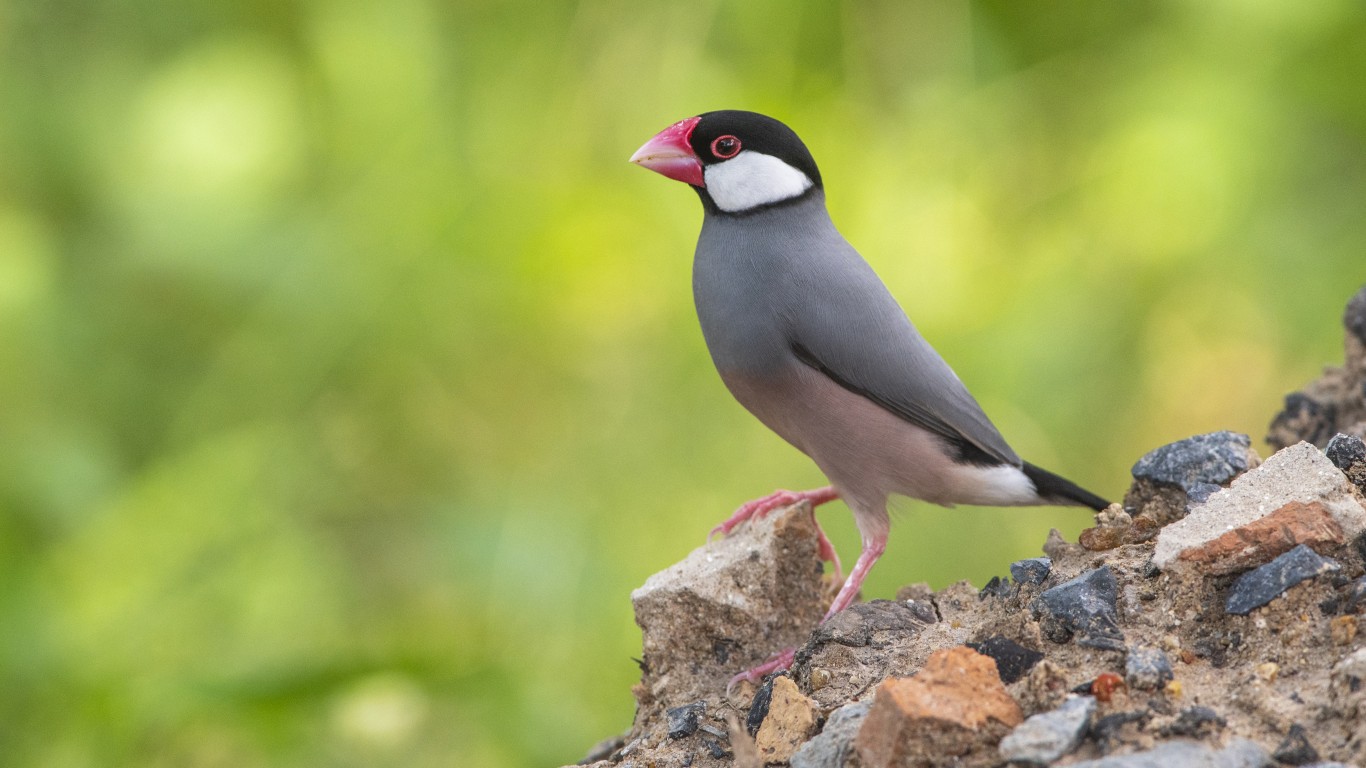
13. Java finches
The Java finch is a relatively quiet, beautiful bird native to Indonesia, where its status is considered vulnerable in the wild. They are social amongst themselves and best kept in pairs or flocks, and they are typically too shy to bond well with humans. They need a cage high enough to fly in — about 7 feet tall — in addition to perches, swings, toys, and a bath basin. Java finches are illegal to own in a handful of states.

14. Wallabies
Although they are not domesticated and cannot be housetrained, some people choose to keep wallabies as pets. It’s illegal to keep them as pets in Australia, but are seen in the United States as pets. They need at least a 6 foot square outdoor enclosure in the warmer months, preferably with grass to graze on, and they must live indoors or be provided with supplemental heat as temperatures dip down to 50 degrees Fahrenheit. There are 11 species of wild wallabies, but the three that are most often taken as pets are Bennetts, Damas, and Red-necked Pademelons.
[in-text-ad-2]

15. Gambian pouched rats
A type of large and potentially invasive rodent, Gambian pouched rats are nevertheless kept as pets in many parts of the world. They’re affectionate and intelligent, with a keen sense of smell, and have been trained to detect land mines in Tanzania as well as tuberculosis in human spit samples. Although bred in captivity, they are not domesticated and will quickly become unfriendly if not petted and played with daily. The are illegal to own as pets in the United States due to their connection to a 2003 outbreak of monkeypox.
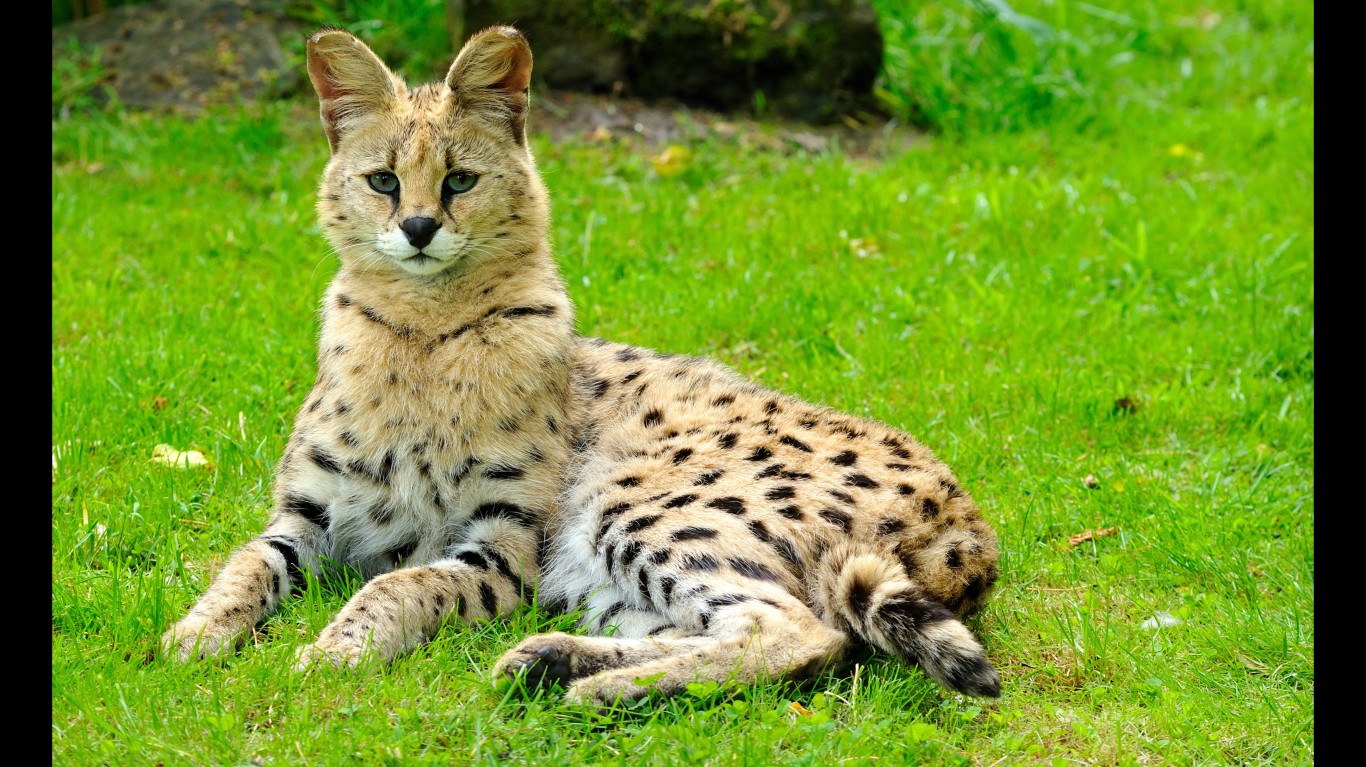
16. Serval cats
While serval cats are gaining popularity as house pets, they are by no means domesticated animals. If kept as pets, these wild African cats require a large outdoor enclosure, whole prey animals, and access to an exotic animal veterinarian. They are only moderately affectionate and not good with children or other pets, though they are very playful and energetic. It is possible to bond with a serval cat, especially if you bottle-feed it from a young age, but they typically only bond with one human and remain frightened of visitors. Servals are illegal to own in many states and require a permit in others.
[in-text-ad]
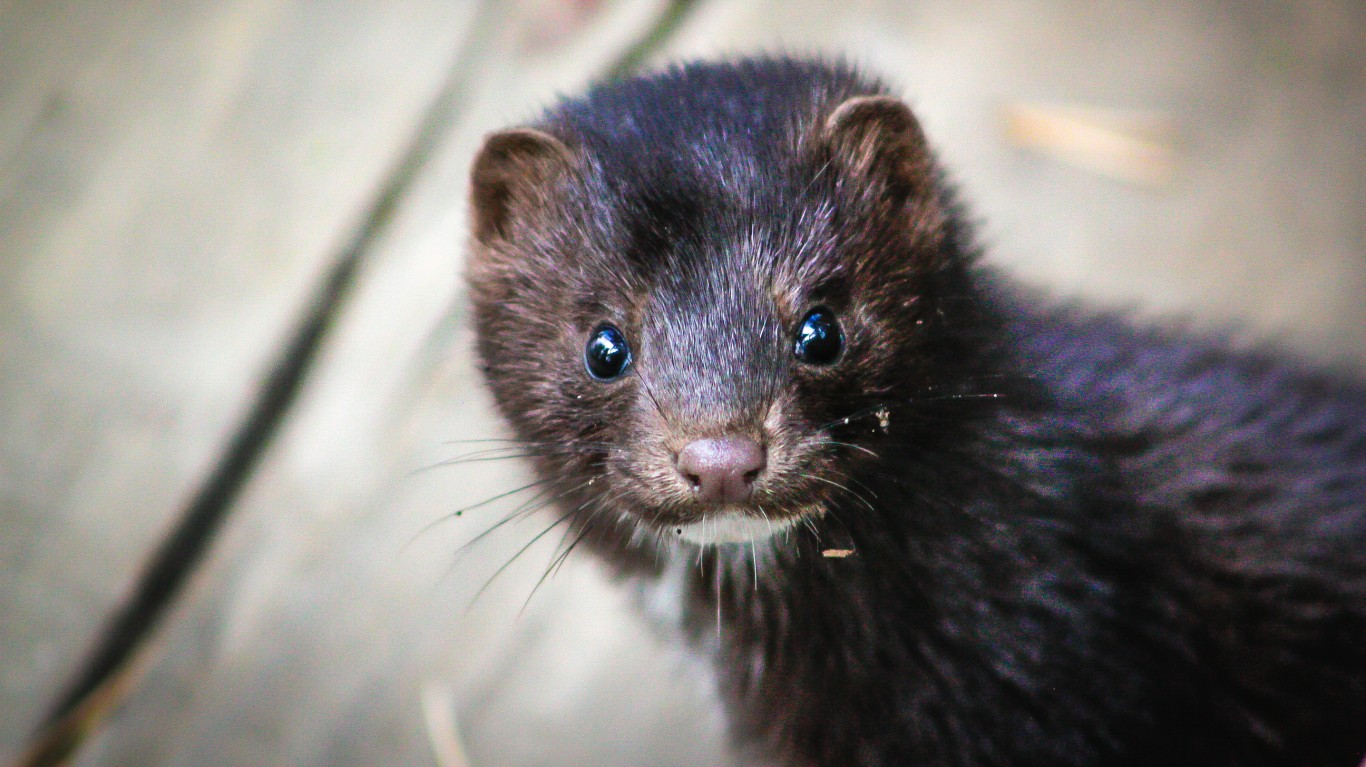
17. Domestic mink
Although minks have been farmed for over 150 years in the United States and are considered domesticated, they are by no means a safe or easy pet to care for. They may look like ferrets, but they need a much larger cage and access to water in order to maintain their health. Because they are natural predators adept at taking down prey much larger than themselves, they should never come in contact with other household pets, including fish, rabbits, and even small dogs.
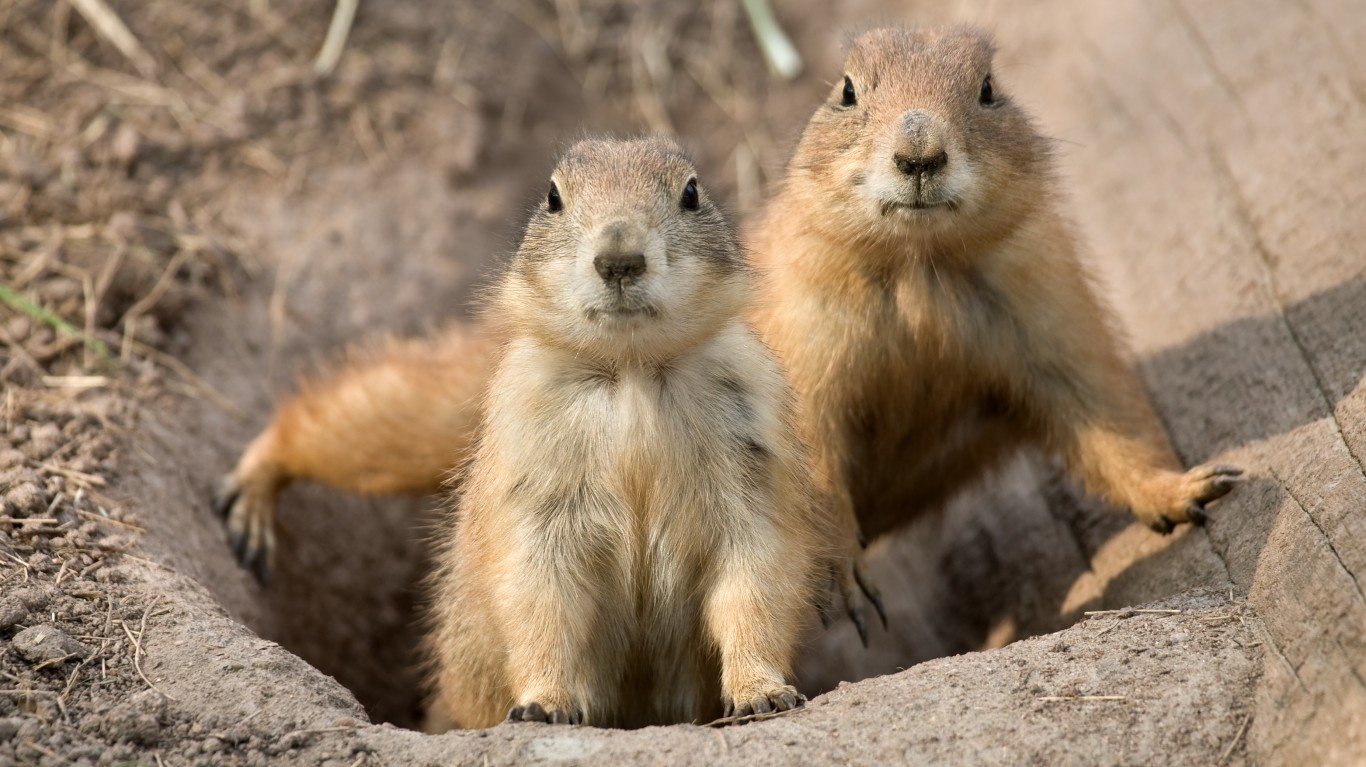
18. Prairie dogs
Prairie dogs are high maintenance, social pets that require a lot of interaction. It’s not recommended that pet owners keep a single prairie dog unless they have adequate time to play with it. They are naturally nippy and aggressive, and only regular handling will keep them tame. They are also territorial and may try to defend the owner from strangers. Prairie dogs were illegal as pets from 2003 to 2008 as they were implicated in an outbreak of monkeypox, but the ban was lifted in 2008.

19. Fennec Foxes
Fennecs, the smallest foxes in the world, hail from the deserts of North Africa. Although it is legal to keep these wild animals as pets in some states, a permit may be required in others, and furthermore, they need careful socialization. When trained from a young age, they can be docile and friendly, though they will bite when they feel threatened. They need adequate outdoor space for running, and they are known to dig under or climb over fences. Fennec foxes also need warm temperatures and love to bask in the sun.
[in-text-ad-2]
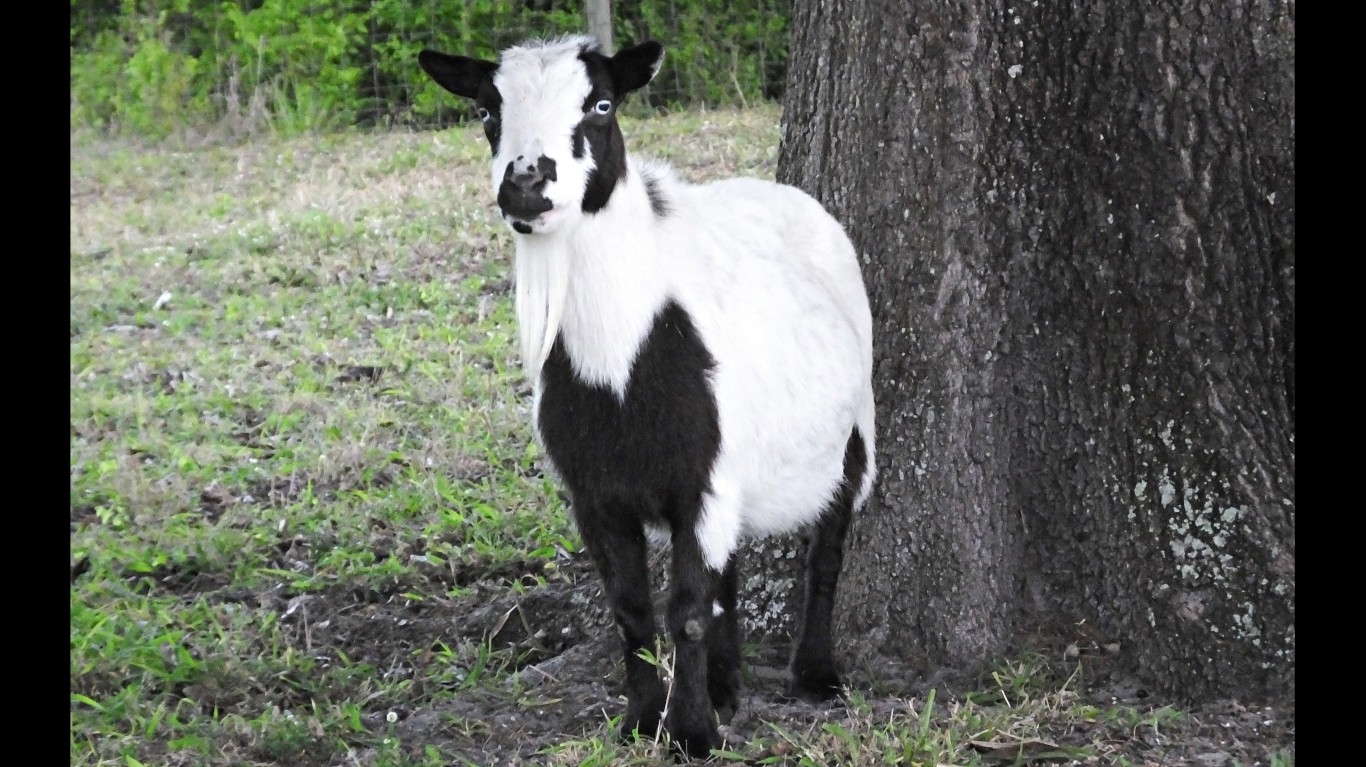
20. Fainting goats
Popular in petting zoos and at farms, fainting goats have become a beloved pet and barnyard attraction. Bred with a genetic condition called myotonia congenita, these goats fall stiffly so the ground when startled. While most goats are known to be clever escape artists, fainting goats are easier to keep in their enclosures as they’ll faint if they start to climb.

21. Burmese Pythons
Burmese pythons are large constricting snakes native to Southeast Asia. In the wild they can reach 23 feet long and weigh up to 200 pounds. As pets, they can be expensive and potentially dangerous. A large, strong cage with carefully regulated temperature is essential, as is whole prey and a water bath for the snake to soak in. Although they are considered docile, they are aggressive when they are hungry and may nip at their owners or try to constrict them when they enter the cage.
[in-text-ad]
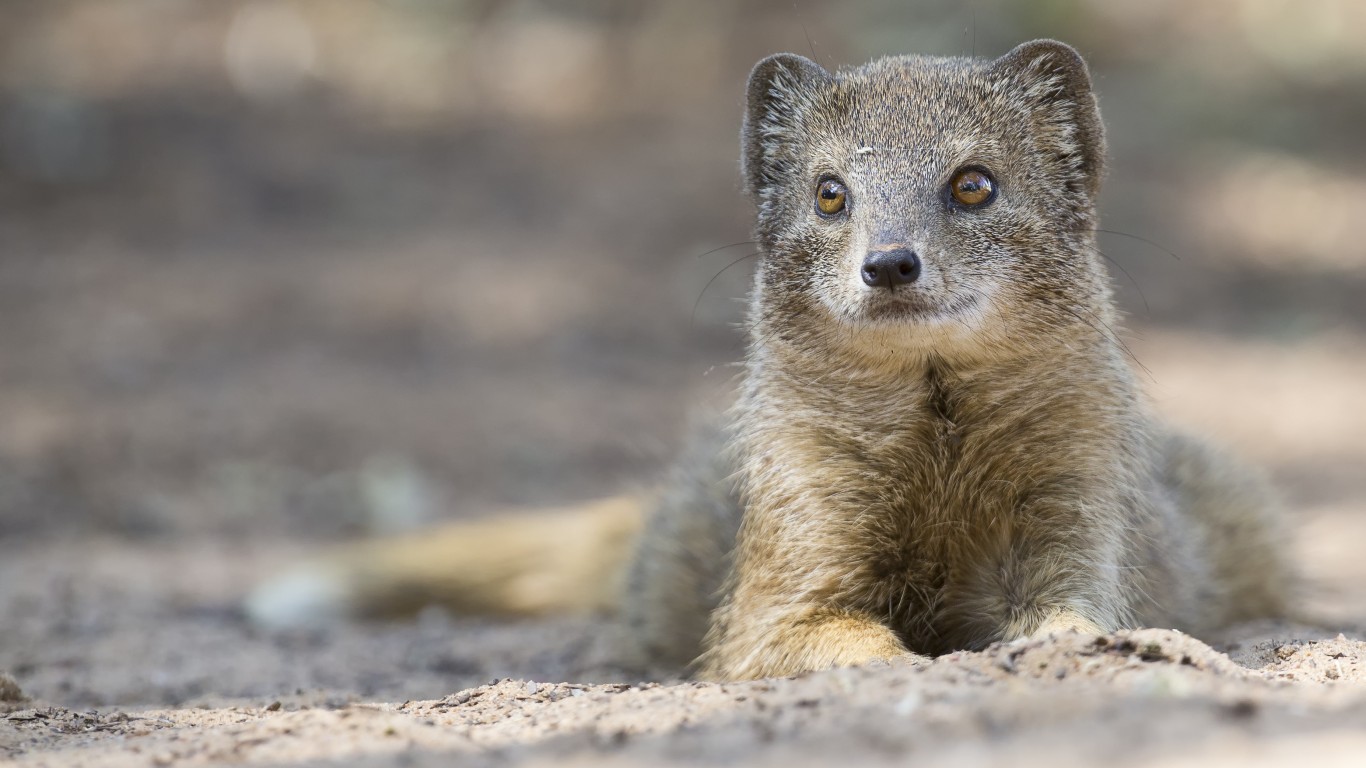
22. Mongooses
Mongooses are found in many parts of the world, including Asia, Africa, Europe, and in the Caribbean. They are considered pests and cannot be imported into the U.S., though there are mongoose breeders in the United States, and they are kept as pets in many countries. When properly socialized, they do make great pets. Mongooses can be trained to use a litter box and play with toys, and they are sometimes affectionate, though they tend to be loners and don’t need to live in pairs.
ALSO READ: These Wild Animals Are Disappearing at an Alarming Rate — Here’s What You Can Do About It

23. Scorpions
Scorpions are venomous pets that cannot be trained or safely held. Although they will not bond or interact with their owners, they are great pets to observe from the other side of the glass. Emperor scorpions are a great species to keep as they are docile and their sting is equivalent to a bee sting.
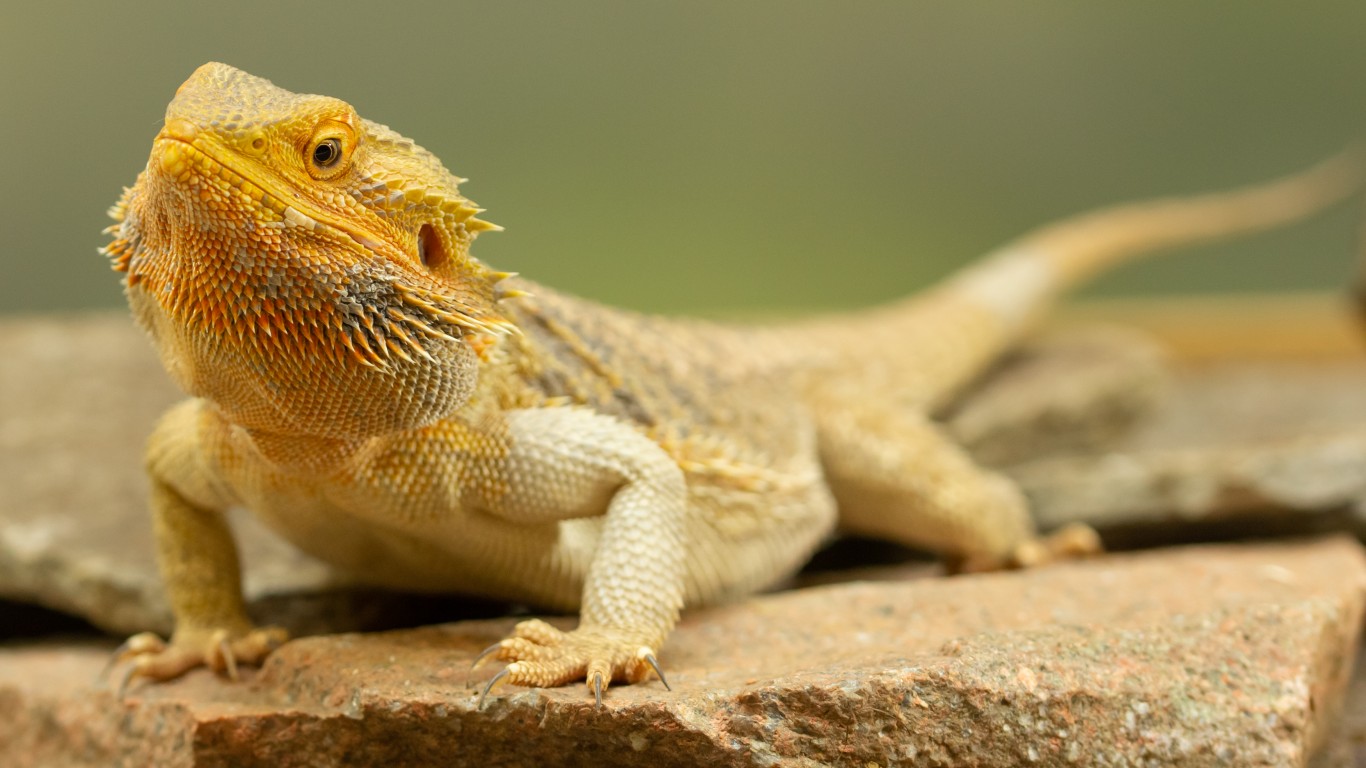
24. Bearded dragons
Bearded dragons are known as one of the most eye-catching and easiest lizard breeds to care for, making them popular pets. They enjoy interaction and can be leash-trained and walked outdoors. Naturally omnivorous, they will enjoy eating mostly crickets along with other insects and vegetables. Because they are native to Australia, they prefer warm temperatures and a rather arid environment. It’s legal to own bearded dragons in the U.S., and they are common in pet stores.
[in-text-ad-2]
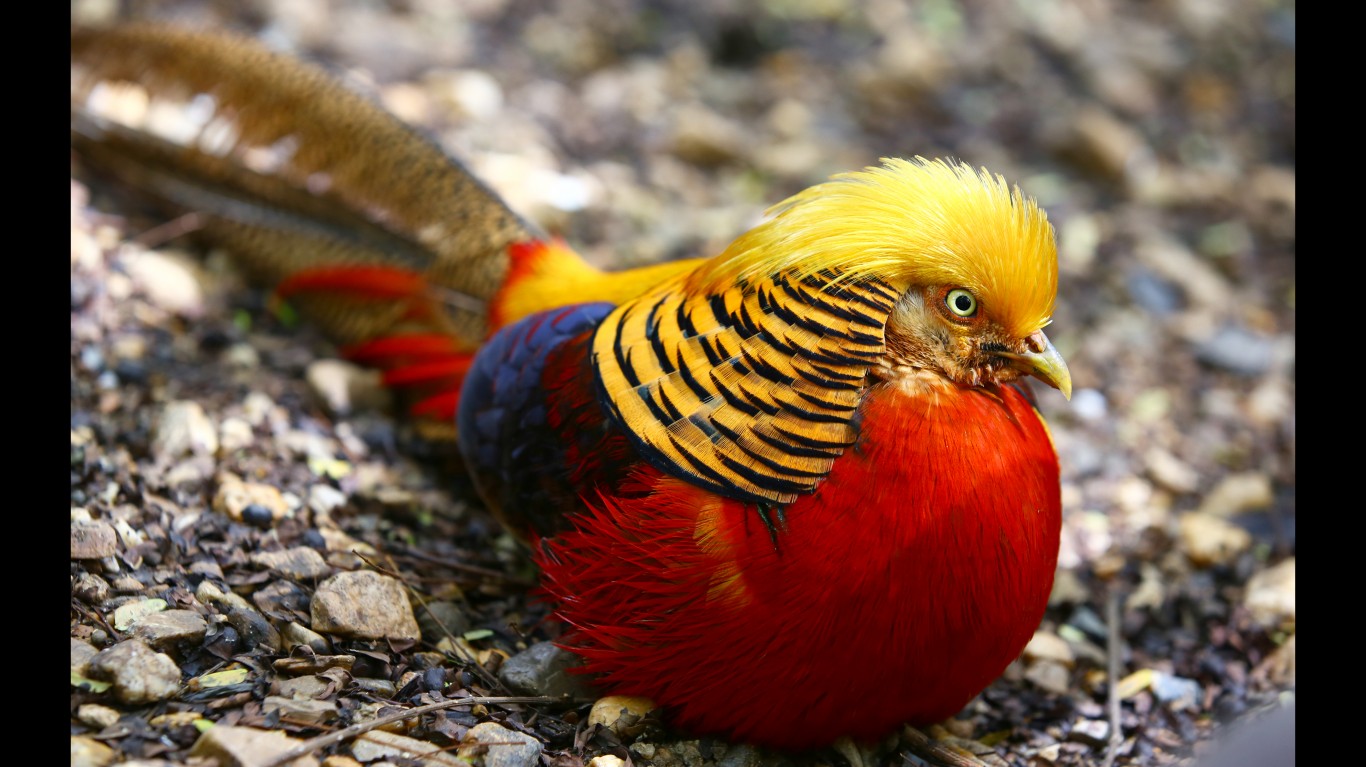
25. Golden pheasants
Golden pheasants are a small, beautiful pheasant breed native to western and central China. They are hardy through the winter and don’t need a very large enclosure, making them popular in backyard aviaries. They also cohabitate well with waterfowl, pigeons, and doves. Because of their popularity as pets and food, wild populations are declining due to poaching, so be sure to purchase your golden pheasants from a reputable breeder.
Thank you for reading! Have some feedback for us?
Contact the 24/7 Wall St. editorial team.
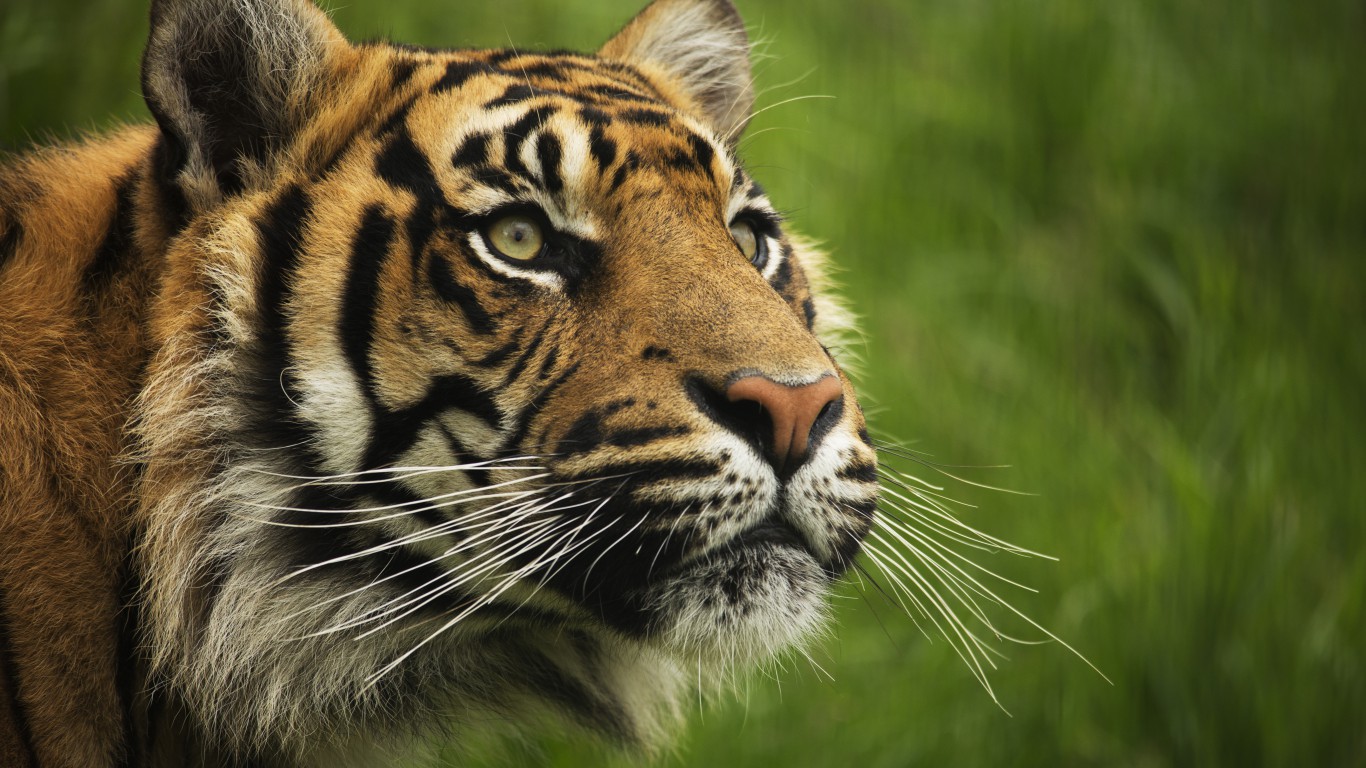 24/7 Wall St.
24/7 Wall St. 24/7 Wall St.
24/7 Wall St. 24/7 Wall St.
24/7 Wall St.
